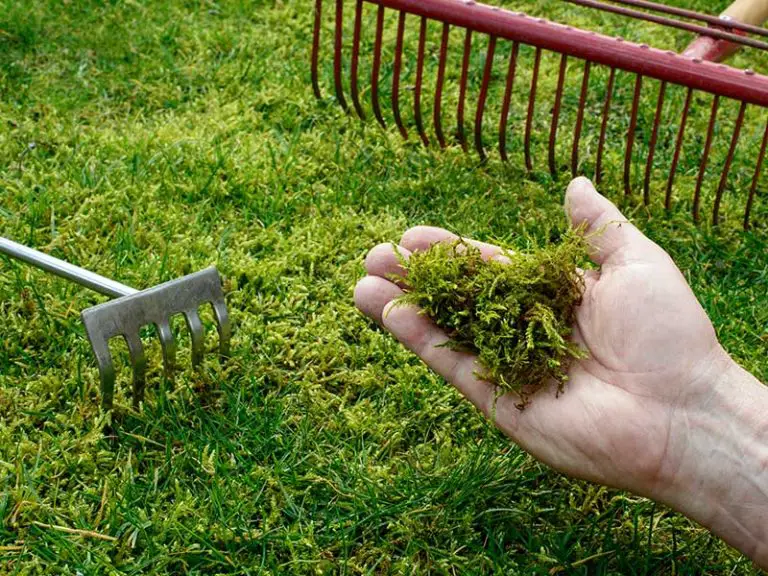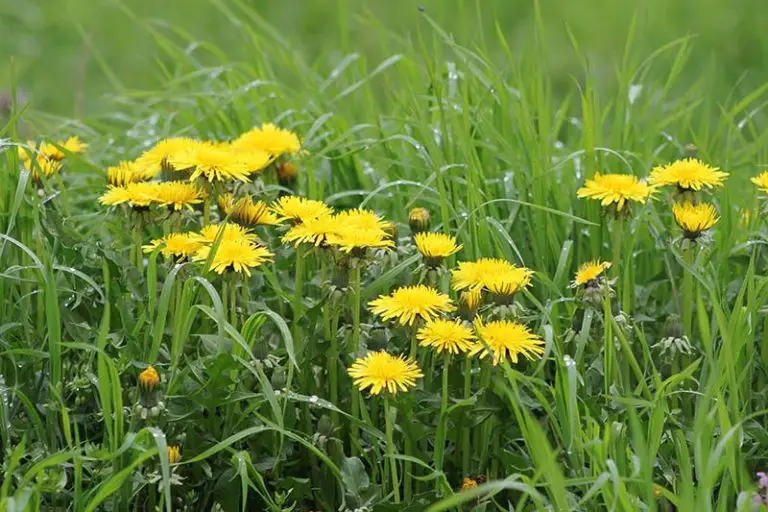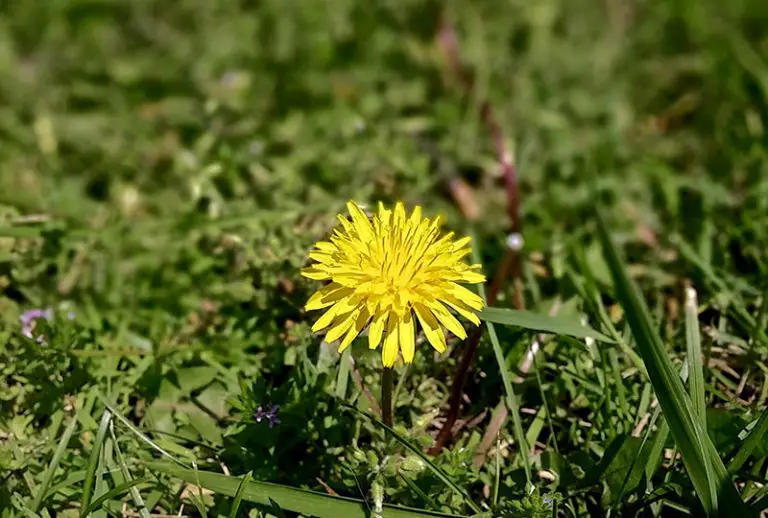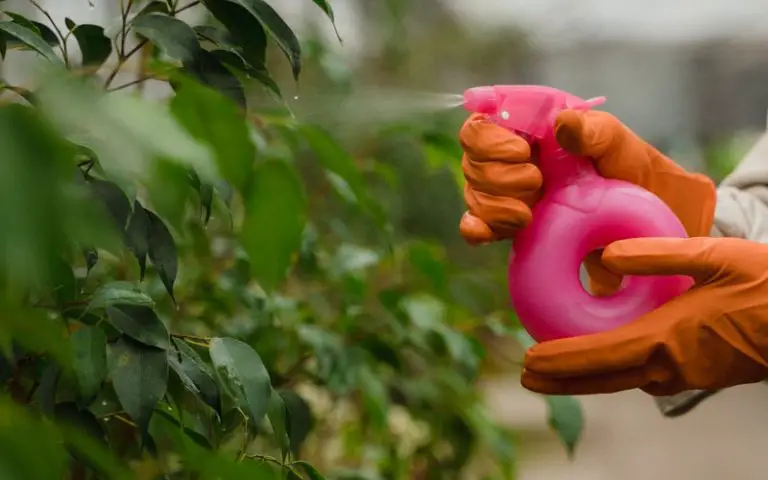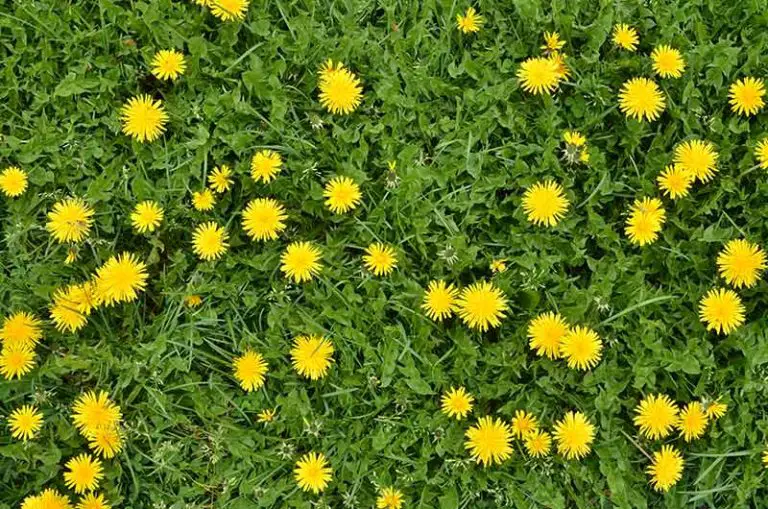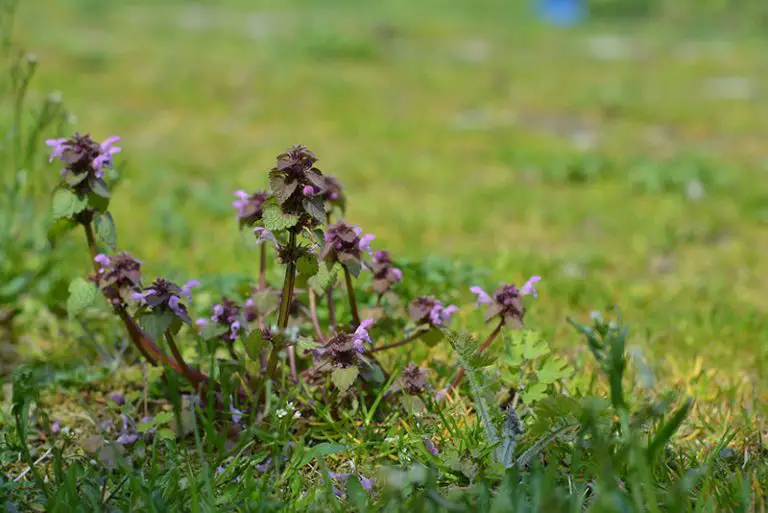How to Get Rid of Quackgrass In Lawn or Garden
If you’re not sure what quackgrass actually is, chances are you’ve already seen it on your lawn without realizing it. While quackgrass looks like the rest of the grass on your lawn, it is an aggressive invasive weed that you should get rid of.
There are a few methods you can use to get rid of quackgrass in a lawn or garden, including manual removal of quackgrass by hand, choking out quackgrass with other healthy plants, or killing quackgrass with a chemical herbicide. You can prevent quackgrass from returning for good by keeping up with regular lawn maintenance activities.
In this guide, we have explained how to kill quackgrass using both natural and chemical methods. We have also provided some tips on how to get rid of quackgrass from your lawn or garden for good.
What is Quackgrass?
Quackgrass is an invasive grassy weed that grows in lawns aggressively throughout the entire growing season. It is a perennial, cool-season grass, growing mainly in the more northern parts of the US.
Quackgrass has an extensive coarse fibrous root system that can grow between 6 to 8 feet deep into the ground. It uses a network of underground stems called rhizomes that enable it to spread throughout the soil. This weed spreads so voraciously as a single plant can grow a rhizome network as wide as 6 feet. In addition to these underground stems, quackgrass spreads itself via seed heads that the weeds produce in June. The seeds are typically transferred between areas by birds or being carried by the wind.
Its seeds and extensive root system enable the quackgrass to spread widely from lawn to lawn, and the weed seed may also be introduced into a lawn through straw bales used during seeding. In addition to lawns, quackgrass can easily spread through empty fields or throughout untouched areas of soil such as along roadsides.
Quackgrass Identification
As the name suggests, quackgrass looks like other grass species as it is technically a type of grass. In lawns, it will grow in patches among the surrounding healthy grass. You can identify quackgrass by assessing the blades, stems, and root systems of the plants.
Blades & Stems: This invasive weed can be distinguished from regular grass by its blades, which are long and tapered, and typically broader than grasses like tall fescue. These blades are blue-green in color, and may appear smooth or hairy. Running your fingers along the blades, they will feel rough to the touch. The stems of the quackgrass plants are hollow. They have auricles, which are the little collars that wrap around the plant’s stem where it connects to the leaf.
Root System: Quackgrass can also be identified by its deep and extensive root system, differentiating it from grasses like annual ryegrass. Pulling up this weed from the ground, you should see its network of thick, white roots. The roots tend to break apart easily meaning that fragments of the root system often remain in the soil after the plant has been pulled up.
Pictures of Quackgrass:
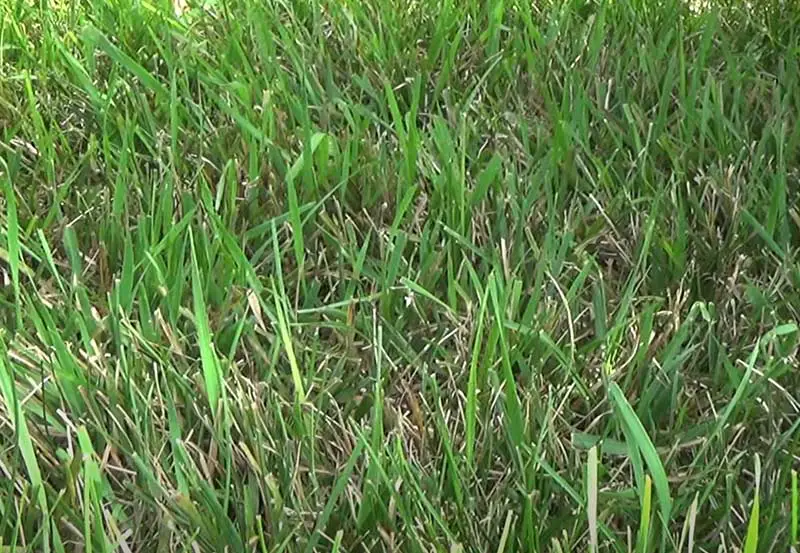
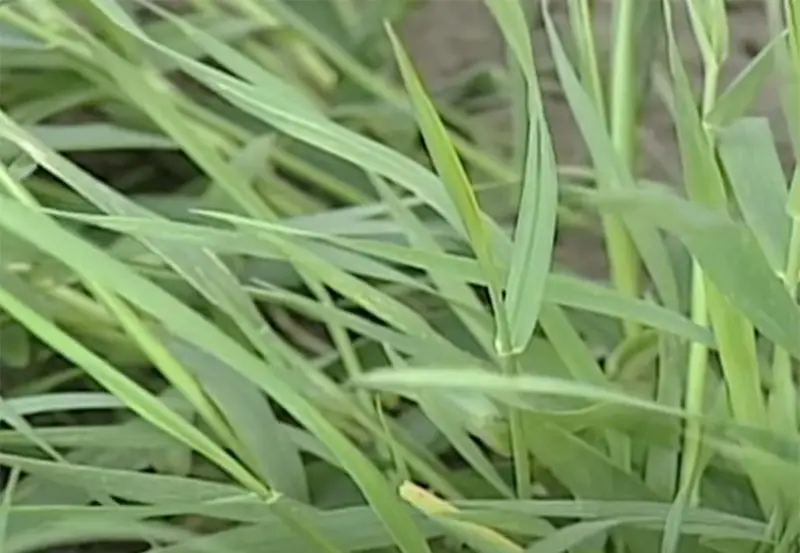
Quackgrass vs Crabgrass
Quack grass is often confused with crabgrass as the two weeds look very similar in appearance. But, in actuality, these weeds are very different from each other.
Quackgrass is classified as a cool-season perennial weed, typically found in the northernmost regions of the US. Crabgrass on the other hand is classed as a warm-season annual weed and is therefore found more often in the southern regions. The two weeds also differ in the way that they reproduce themselves and spread throughout soil.
Quackgrass is what’s known as a perennial weed, meaning that it is able to remain green throughout the entire year depending on the climate it’s growing in. It is a non-native plant to the US. As we’ve discussed, quackgrass spreads using seeds and underground stems called rhizomes.
Crabgrass is classed as an annual weed as it only grows throughout the warmer seasons of the year. In the more northern regions of the US, this weed’s seed may not begin germination until late May. There are several varieties of plants referred to as crabgrass, but the non-native varieties such as smooth crabgrass and hairy crabgrass tend to cause the most issues for homeowners. This weed spreads by taking over bare spots of soil uninhabited by other growth.
While pH, moisture, and fertilization levels can have an impact on the growth of quackgrass, they don’t have the same effect on the growth of crabgrass. Despite that, the best method to stifle the growth of both of these weeds is to grow a thick healthy lawn full of grass that can outcompete the unwanted plants.
How to Kill Quackgrass
There are several different methods you can use to kill quackgrass on your lawn. Natural methods of quackgrass control include manual removal by hand or choking out the quackgrass plants by encouraging the growth of other healthy plants. Alternatively, a fast-acting non-organic method to kill quackgrass is by using a chemical quackgrass killer.
Manually Remove Quackgrass By Hand
Manual removal by hand is a direct way to get rid of quackgrass, but it isn’t the most reliable. As the roots of the weed are long and easily broken apart from the main plant, the quackgrass is likely to return unless every fragment of the plant is removed from the soil. With that said, this method can still be effective if you’re dealing with smaller-scale growth.
1. Dig Hole Around Quackgrass Plant
Using a garden trowel, start digging into the soil about 3.7 inches away from the base of the quackgrass plant; digging too close to the roots may break them apart causing the plant to return. Continue to dig a hole 1 ft deep and 1 ft wide. Look for the quackgrass’ rhizome, which appears as a horizontal white stem, and gently clear the surrounding soil away from it.
2. Pull Up the Quackgrass Plant Gently
Once you have loosened the length of the rhizome, grasp the quackgrass plant. Pull up on the plant gently to remove it from the ground without breaking it apart. Check that you have removed the entire root beneath the plant. Repeat this process for each quackgrass plant.
3. Refill Holes With Soil
Once you have cleared the area of every visible quackgrass plant, refill the holes to level the soil. Use a shovel or similar tool to add new topsoil or push the surrounding soil back into the holes. Keep an eye out for leftover plant material, raking away anything that you suspect remains from the quackgrass.
4. Reseed the Planting Area
Fill in the bare spots of the planting area with the seed of your choice. If you’re working on your lawn, use the grass seed of the species you’re already growing. If the area is barren, transform it into a garden and plant competitive crops like oats, rye, wheat, buckwheat, sorghum, or clover. This will help to outcompete any regrowth of weeds like quackgrass in the future. Alternatively, you could cover the area for the following 6 months with a 3-inch layer of mulch to stifle potential regrowth. The best type of mulch to prevent quackgrass is an opaque plastic mulch, but an organic mulch would also do the job.
Choke Out Quackgrass With Other Plants
You can choke out quackgrass growth by encouraging the growth of other healthy plants to outcompete the weeds. This involves overseeding the weedy lawn with desirable grass or plants, then following up with a rigorous lawn care routine including regular watering, mowing, and fertilization. This method is best for quackgrass control on lawns and fields, and is a longer-term solution that will take a while before you see its full effect.
1. Overseed Area With Grass and Cover Plants
Choose your desired grass seed or cover plants to grow in the area that you want to suppress quackgrass growth. If working on a lawn, overseed the area with an appropriate grass seed for overseeding. As general guidance, you will need at least 2 lb of your chosen seed per 1000 square ft of soil – more seed may be required for grass types like bluegrass or ryegrass. Make sure to pay particular attention to bare patches and the spaces between the existing grass blades when spreading the new seed. Avoid tilling the seed at this stage, as this may shred the quackgrass roots causing it to spread further.
2. Water Area Twice a Day Until Germination of New Grass Seed
Keep up with a typical watering schedule for new grass seed by watering at least two times per day until the seeds start to germinate into seedlings. The best practice is to ensure that the top ¼ inch of the soil in the area is constantly moist throughout the first 14 days after planting. Once the seedlings have begun germination, reduce your watering sessions to about 2 to 3 times per week, watering more deeply each session. The amount of water that you have to add will vary based on the weather conditions of your area.
3. Mow Grass Every Week Once Grass is Long Enough
When the new grass seed grows to be longer than 3 inches, begin your regular mowing schedule by mowing every week. Set the height on your mower’s deck to a setting of 3 inches. Try to maintain the grass at this height by mowing as often as necessary. This will help to cut back the quackgrass while encouraging the growth of the healthy grass that will eventually choke the weed out. It may be necessary to mow the grass twice per week to prevent the overgrowth of the quackgrass. However, make sure not to cut the grass too short, as this can cause the quackgrass to spread even more quickly and aggressively.
4. Apply High-Nitrogen Fertilizer From Spring Until Fall
Keep up with a regular fertilization schedule by spreading a high-nitrogen fertilizer every two weeks, starting in spring and continuing until fall. Nitrogen is the nutrient needed by plants in order to grow strong, resilient foliage. Purchase an organic or non-organic fast-release fertilizer, and then spread it throughout your lawn. To ensure even distribution, use a fertilizer spreader and walk it slowly over the entirety of your lawn. Refer to the label on your chosen fertilizer to know the exact amount of fertilizer you should apply; as a general idea, you’ll need about ¼ lb of fertilizer per 1000 square ft.
5. Continue Lawn-Care Practices Until Quackgrass is Gone
Continue taking care of your lawn until the healthy grass outcompetes the quackgrass. Keep up with regular watering, mowing, and fertilization schedules, and your grass will eventually choke out the growth of the quackgrass completely, along with any other weeds in your lawn.
Use a Chemical Quackgrass Killer
While it is possible to kill quackgrass using herbicide, there are no products available that selectively kill this weed without harming the surrounding plants. Therefore, if you choose to kill the quackgrass with a chemical herbicide, you will have to choose one that contains glyphosate. Take note that this herbicide will also kill any other plants it touches.
1. Spray Area with Glyphosate Herbicide
Purchase an appropriate all-purpose herbicide containing the chemical glyphosate. Put on full protective gear, including long-sleeved clothing, chemical-resistant gloves, a respirator mask, and rubber boots. Spray the herbicide directly onto the area where there is quackgrass growth. If you want to minimize the application of the chemical and you’re only dealing with a small amount of quackgrass, you can alternatively paint the herbicide on the leaves of the weed with a paintbrush. Keep pets and children off the lawn for at least four hours after application – check the label of your chosen product for exact safety instructions.
2. Wait Two Weeks Before Reapplying Glyphosate Herbicide
Two weeks after the initial application, reapply the herbicide over the same spots, even if they appear to be free of quackgrass already. This is to eliminate any leftover roots that remained after the first application.
3. Look For Leftover Plants After Another Week
One week after the second application of herbicide, rough up the planting area to look for any remaining quackgrass. Either remove the dead plants or till them back into the soil to act as a natural fertilizer. If working on a large area, use a rototiller to till the soil, setting it at a depth of 4 inches. Run the rototiller over the entire planting area to prepare it for new growth. A gardening fork or similar tool can be used to till the soil in a smaller area.
4. Reseed the Planting Area
Once you’re sure there is no more quackgrass growth and you have prepared the planting area, reseed the soil with new grass seed. Make sure to wait long enough from the last application of the weed killer before planting grass seed. Choose a species that will grow quickly into a thick new lawn, like buckwheat, bluegrass, or tall fescue. Alternatively, at this stage, you could transform the area from a lawn into a garden. Plant the area with other types of plants, then cover the soil surface with a thick layer of mulch to prevent weeds from growing. Keep an eye on the mulch for signs that the quackgrass is returning.
How to Get Rid of Quackgrass in Your Lawn For Good
The best way to get rid of quackgrass and prevent it from returning is to maintain a healthy lawn or garden full of strong, resilient plants. This is done by keeping up with regular lawn care practices like monitoring your soil pH, keeping the grass longer, and watering and fertilizing at the right times.
Test Soil
To be in their best condition, grass and plants need to grow in soils with an appropriate pH. If the pH level of the soil is out of the correct range, the plants are unable to take up the nutrients they need to grow into strong plants resistant to stress and weed growth. Testing your soil will also reveal the amounts of nitrogen, potassium, and phosphorous it contains. These are the three primary nutrients essential to the healthy growth of all plants.
First, find out the ideal soil pH level for the plants you’re growing; for most grasses, this range is a pH between 6.5 and 7.0. Then, test the soil to make sure it’s within this range. Check that there are also sufficient amounts of nitrogen, potassium and phosphorous if you use a kit that also shows the level of these nutrients. Adjust your soil with an appropriate pH-adjusting material if necessary.
Maintain Healthy Lawn
Maintaining a thick and healthy lawn is the best long-term solution to preventing the growth of weeds, including quackgrass. Thick, healthy grass will choke out weeds long term. Keep up with regular watering and fertilization schedules. The best fertilizer to promote a thick lawn is an organic, high-nitrogen fertilizer.
Mow Higher
You can also stifle the growth of weeds like quackgrass by keeping the grass longer. Weed seeds sit on the surface of the soil and will begin germination when the conditions are right. Longer grass provides the soil surface with shade, blocking sunlight from reaching the weed seeds and preventing germination. Raise the height on your mowing deck and maintain your grass at a longer length to choke out quackgrass and other weed seeds before they get the opportunity to take root.
For more tips on how to get rid of other common weeds, see our article How to Get Rid of a Lawn Full of Weeds.

